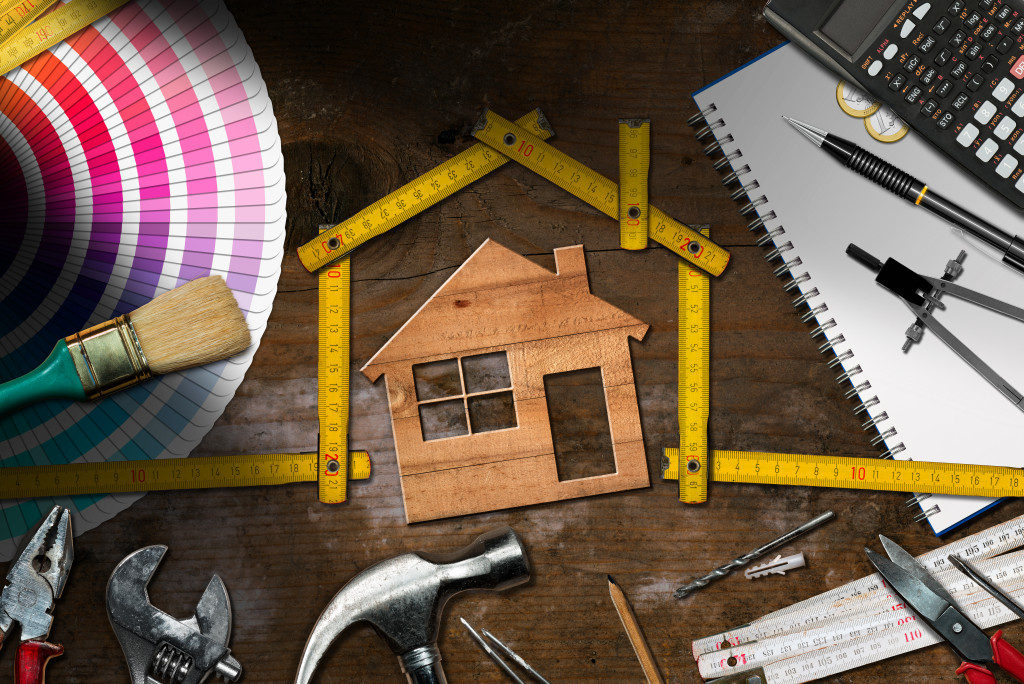- Renovate your home to add significant value and modernize its layout.
- Finish the basement or attic to add more space, or consider an open-concept living area.
- Declutter and organize each room for a functional and welcoming environment.
- Invest in energy-efficient upgrades to save money and reduce your carbon footprint.
- Improve curb appeal with landscaping, swimming pools, sidings, and fences.
As the old saying goes, your home is your castle. It’s a place where you feel safe and comfortable and where you make some of your fondest memories. However, with time, your needs and preferences change, and your homes might start to feel outdated or cramped. When that happens, many people instinctively begin to consider purchasing a new home. But for some, this might not be the best option. Perhaps you love your neighborhood, your neighbors, and your schools, or you simply don’t want to deal with moving and all the associated costs. Here’s how to upgrade your home instead of buying a new one.
Home Renovation
The first and most obvious way to upgrade your home is through a renovation. A renovation can range from a fresh coat of paint and some new appliances to a complete overhaul that changes the layout, adds new rooms and modernizes the entire home. Renovations come with a price tag, but they can also add significant value to your home. Here are some ideas:
Basement or Attic
If you’re looking to add more space to your home without a complete renovation, consider finishing your basement or attic. These spaces are often underutilized and can add significant square footage to your home.
Finishing a basement or attic might involve adding insulation, drywall, flooring, and lighting, and it’s essential to ensure the space is properly waterproofed and ventilated. A finished basement or attic can serve as a guest room, a home office, a playroom, or a movie room, depending on your needs.
Open-concept Living Area
Open-concept living has become increasingly popular in recent years. This type of renovation involves removing walls and creating an open floor plan that connects the kitchen, dining area, and living room. This allows for greater flexibility when it comes to furniture placement and makes your home feel more spacious.
Decluttering & Organizing
Finally, don’t overlook the power of decluttering and organizing. Often, you don’t realize how much clutter and disorganization contribute to the feeling of a cramped or outdated home.
By taking the time to declutter and organize each room in your home, you can create a more spacious, functional, and welcoming environment. Consider donating or selling items you no longer need or use, and invest in storage solutions like shelving, baskets, and hooks to keep things tidy. You’ll be amazed at how much better your home will feel once you’ve cleared out the excess.

Energy Efficiency
Another way to upgrade your home is to focus on energy efficiency. Not only will energy-efficient upgrades save you money on your utility bills, but they can also make your home more comfortable and reduce your carbon footprint.
Some simple upgrades include upgrading to LED light bulbs, adding insulation, sealing air leaks, installing a smart thermostat, and upgrading to Energy Star-rated appliances. These upgrades might not seem as flashy as a renovation, but they can have a big impact on your day-to-day life and the planet.
If possible, take the time to research your local incentives and rebates for energy-efficient upgrades. You might be able to get financial assistance or tax credits that make these upgrades more affordable.

Curb Appeal
You should also consider investing in curb appeal. This refers to how attractive and well-maintained your home looks from the outside, and it’s essential for making a good impression on visitors and potential buyers. Some simple ways to upgrade your home’s curb appeal include:
Landscaping
Adding landscaping to your home is an easy way to improve its appearance and boost its value. Planting flowers, shrubs, and trees will add color and texture to your outdoor space. Plus, it will provide a welcoming environment for your friends and family. You can also consider installing outdoor lighting or a water feature to create an even more inviting atmosphere.
Adding a Swimming Pool
Adding a swimming pool to your home is a great way to create the perfect outdoor oasis. It will provide endless hours of fun and relaxation for you, your family, and your friends. Pools come with a hefty price tag, but depending on where you live, they can also add significant value to your home.
To properly maintain your pool, research ways to efficiently lower pool pH without chemicals. This could go a long way in saving you money and ensuring that your pool remains clean and healthy.
Installing Sidings or Fences
Another way to improve your home’s exterior is by installing siding or fences. New sidings can give your home a fresh, modern look while also providing an extra layer of insulation and protection from the elements. Fences are a great way to define boundaries, add privacy, and keep pets in or out of certain areas.
If you’re considering upgrading your home, remember that you have many options beyond buying a new one. Renovations, energy-efficient upgrades, finishing unused spaces, investing in curb appeal, and decluttering and organizing can all transform your home into a place that meets your needs and fills you with joy. As with any major project, it’s essential to plan carefully, budget realistically, and work with qualified professionals to ensure a smooth process.

